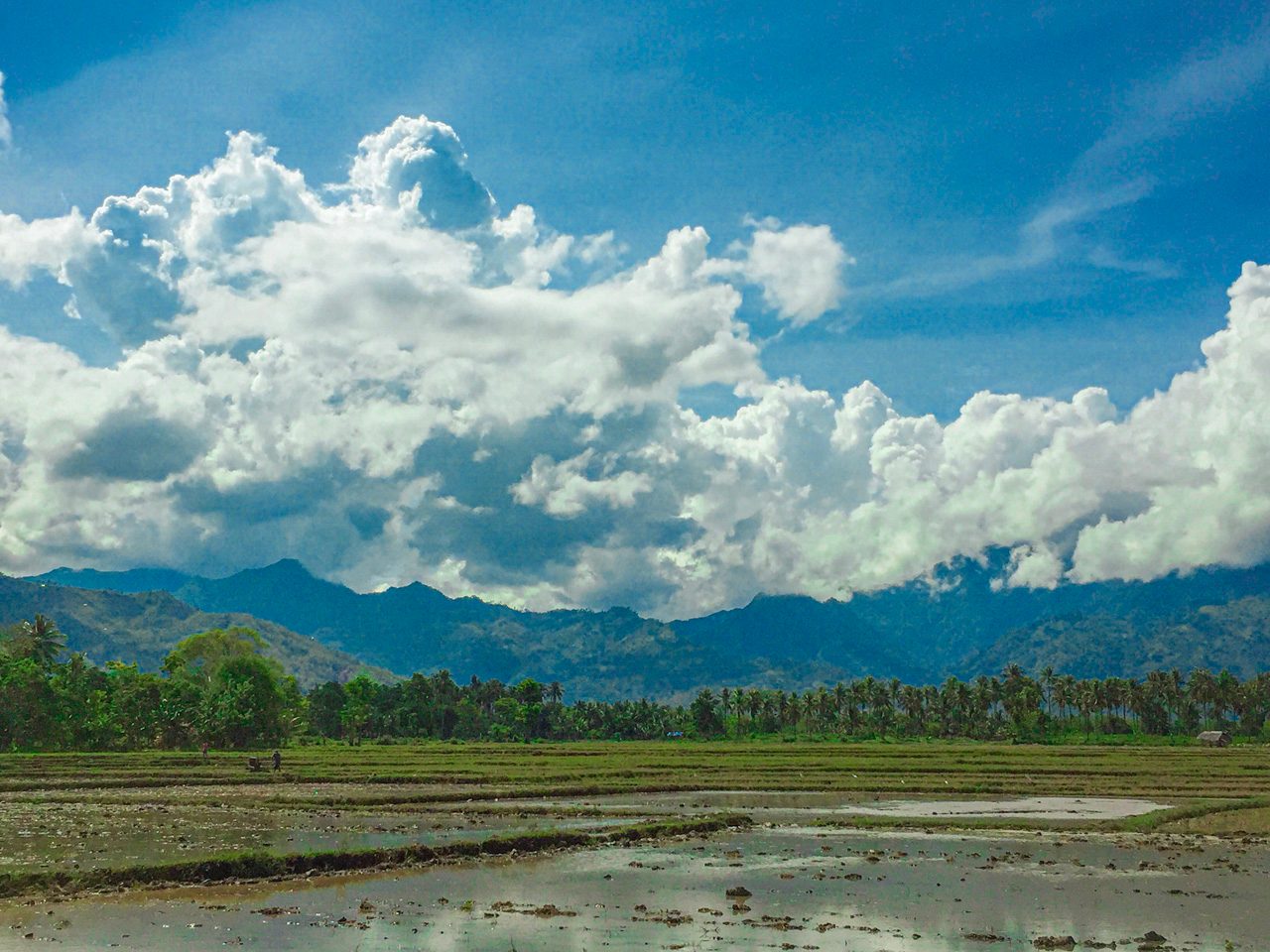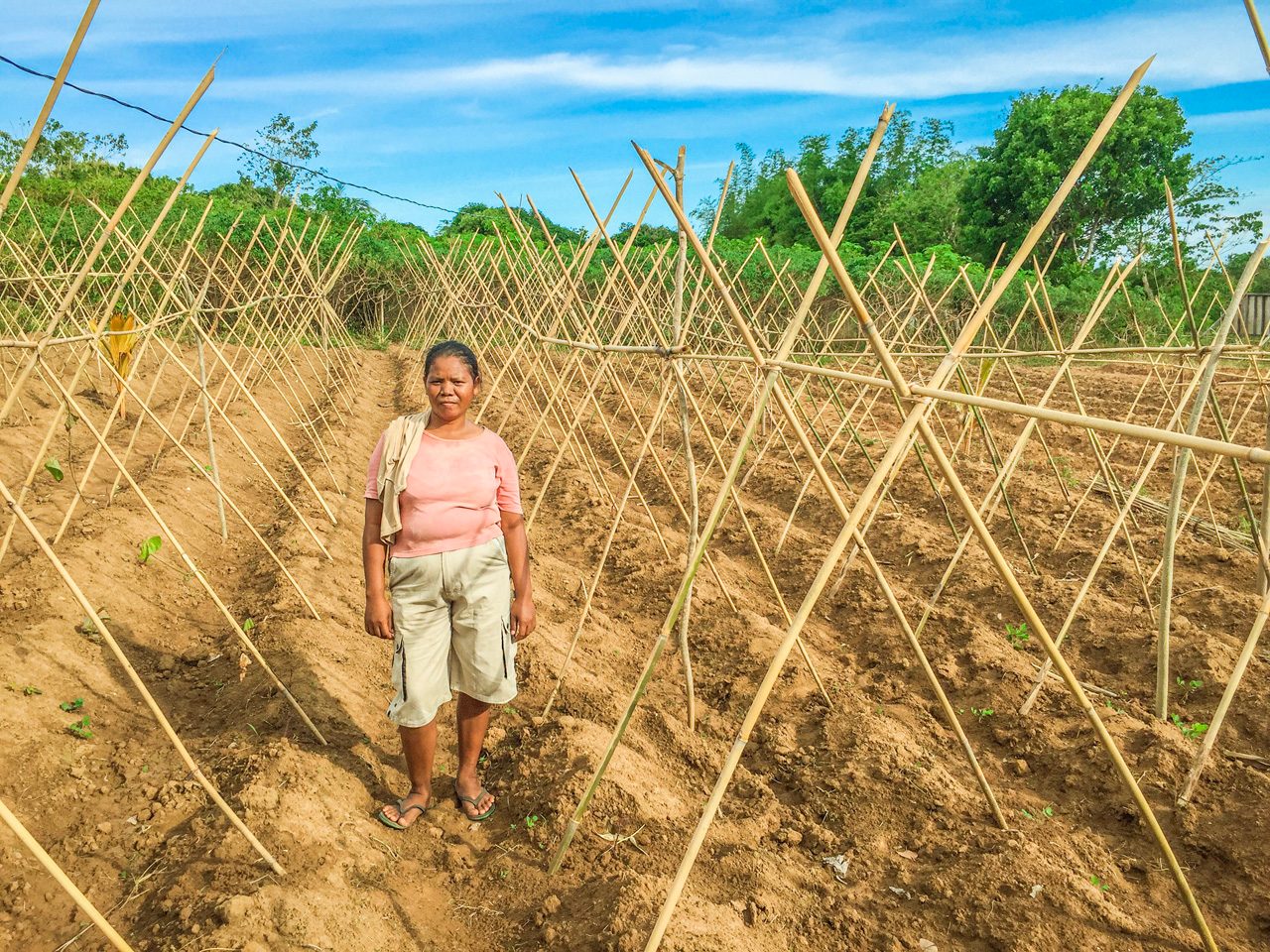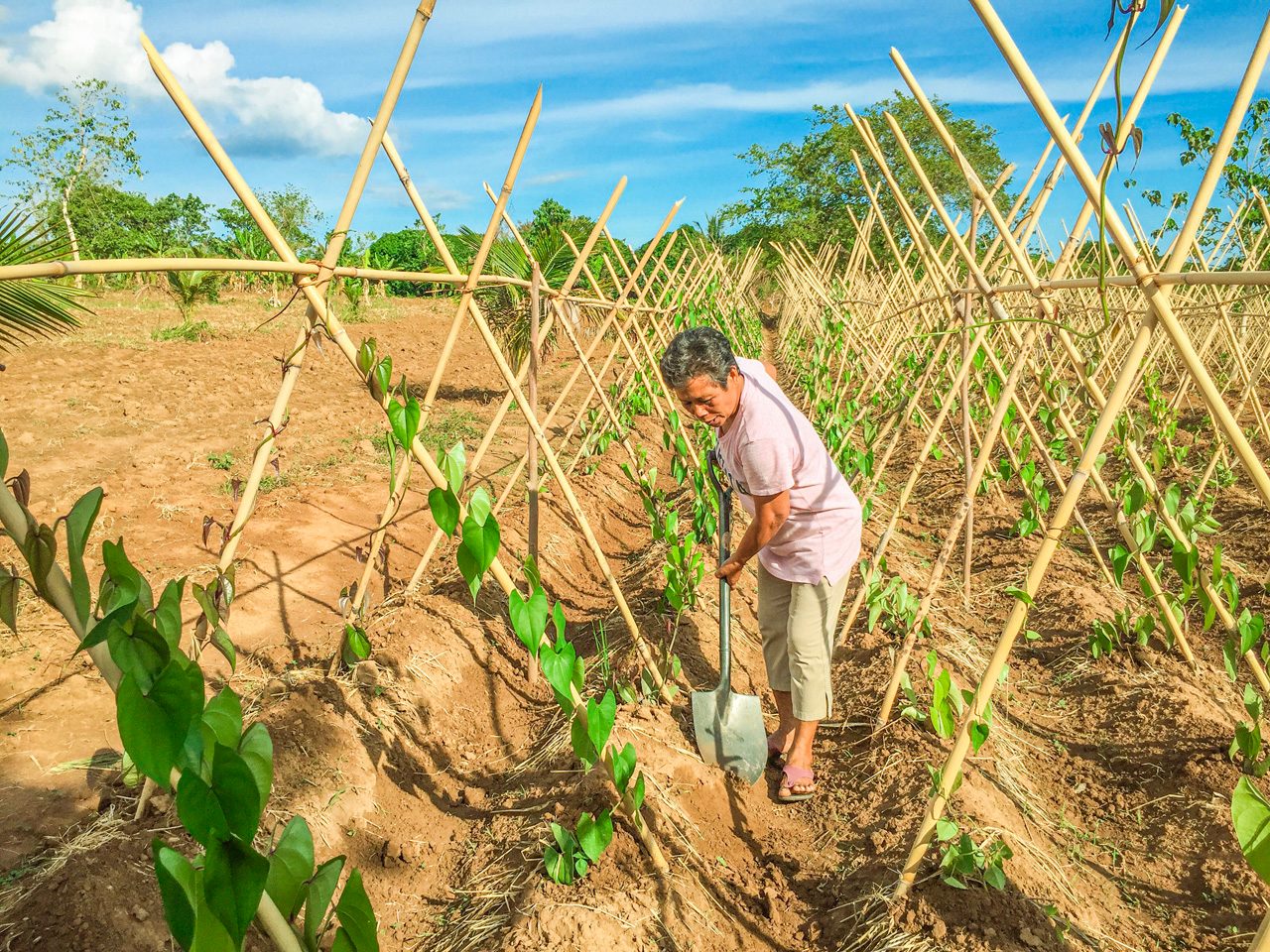SUMMARY
This is AI generated summarization, which may have errors. For context, always refer to the full article.

PALAWAN, Philippines – In a community nestled in the forested mountain range in southern Palawan, 34-year-old Jesmina Saguran and her fellow Pala’wan indigenous women wake up early in the morning with a renewed sense of self.
Amid towering trees and birds melodiously singing in the background, they find themselves excitedly trooping down the mountain to check their organic vegetable demo farm located in the lowland in Barangay Inogbong, Bataraza.
“Every other day, with children in tow, we all leave our home in the mountain at 6 am, and walk for almost two hours to the demo farm,” Saguran, a mother of 8 children, told Rappler.
Saguran is just one of the indigenous women members of Kusor Upland Farmers Association (KUFA), an organization formed with the support of the United States Agency for International Development’s (USAID) Protect Wildlife project that empowers communities to secure Palawan’s rich biodiversity.
Biodiversity conservation
As one of the project’s conservation strategies, KUFA was established last year to help indigenous peoples diversify their income sources by teaching them best practices in upland vegetable production and providing them with vegetable seedlings.
This alternative livelihood is seen to gradually wean them away from engaging in wildlife poaching and expanding their kaingin (slash-and-burn) farm areas in Mount Mantalingahan Protected Landscape (MMPL), a key biodiversity area stretching 120,457 hectares in southern Palawan.
“It’s our belief that once they’ve managed to grow their own upland community enterprise, they would no longer be tempted to expand their kaingin farms or hunt birds [and other wildlife] during lean months,” said Lawrence San Diego, USAID Protect Wildlife communications officer.
Located 140 kilometers south of Puerto Princesa City, MMPL is known for harboring a number of endemic plant and animal species, including 23 that are in the International Union for Conservation of Nature’s list of threatened species. This largest terrestrial protected area in Palawan also serves as the major watershed of 5 agriculture towns.
The intervention, in addition to the consistent conservation campaign carried out by the MMPL Protected Area Office (PAO), has proven to be effective as KUFA has helped avert the continuing deforestation and wildlife resources loss in MMPL.
“I always encourage my members to cease opening new forests for slash-and-burn farming and also to guard the wildlife against poaching,” KUFA president Rubinita Once said.
“As I’ve observed, the situation is different now,” Once said, adding that those threats imperiling MMPL’s sustainability had been curbed.

Resources’ sustainability
Saguran said when they got involved in the association, they realized the dire need to conserve their home for their survival and the survival of the generations to come. “Forest means water and food to us. If it’s gone, we will die,” she said.
The largely forested mountain range cradles over 12,600 individuals, majority of whom are indigenous peoples who subsist on forest products and other resources it gives to survive.
“We explain to them the science of conservation in a way they would understand, and that’s when they begin to appreciate the benefits of protecting Mount Mantalingahan,” said Michael John Cantuba, MMPL PAO information officer.
Left intact, MMPL prevents soil erosion and flooding in the lowland, and also absorbs carbon dioxide that otherwise goes into the atmosphere and aggravates global heating and climate crisis.
MMPL’s various ecosystem services, including its waterfalls, caves, and other potential tourism attractions benefit local communities with an estimated total economic value of $5.6 billion. Indigenous peoples, meanwhile, generate around $ 1.1 million in revenue in goods within MMPL each year.
“We tell them it’s not only food and water they will stand to lose if they continue cutting down trees in old growth forest, but also their traditional medicinal plants, clean air, and many more,” Cantuba added.
But the MMPL information officer clarified the indigenous peoples are allowed to continue cultivating their existing upland farms in respect to their culture.
Empowering women
Rural women play vital roles in achieving agricultural development. However, their marginalized situation deprives them of access to opportunities that allow them to be key agents, specifically in ensuring food security.
“Empowering them is key not only to the well-being of individuals, families, and rural communities, but also to overall economic productivity, given women’s large presence in the agricultural workforce worldwide,” the United Nations Women’s website stated.
Through KUFA, rural women living within MMPL have been given a platform to break into the male-dominated farming industry. In the association, women outnumber men – 42 over 13 – proving this economic activity isn’t just for males.
“While my husband is into farming, he’s not interested in leading an organization. So when my members put their trust on me, I’ve accepted the responsibility instead,” said 52-year-old KUFA president Once, who has gained the community’s respect for helping indigenous peoples in any way she can.
The USAID Protect Wildlife has partnered with nonprofit group Lutheran World Relief that has funded the establishment of a one-hectare demo farm. The demo farm introduced advanced upland vegetable production techniques as well as farm tools to indigenous women.
Once lends part of her 10-hectare farmland to the association.
“Since it is I who usually buy their produce, it’s my heart’s desire to help them further,” said the non-native who has been engaged in farming for nearly 30 years.
Protect Wildlife worked alongside the municipal agriculture office in organizing and equipping KUFA. Through a series of workshops, Once and her indigenous women members have gained confidence in their ability to uplift their living condition and create a better community.
“In our training recently, I realized how it’s challenging to manage people, but since I’ve already assumed the role, I will do my best for the success of our association,” Once said.
Asked what she loves about joining KUFA, Saguran shared: “Here, we happily work together. Some water the garden beds, while some weed out grass. Others put organic fertilizer on the plantation plots.”
“In our upland farms, it’s not like that because there we’re working alone, apart from each other. Farming is light and enjoyable when you’re working alongside other community members.”

Access to markets
KUFA members were recently trained to plant yam, which is expected to be harvested next summer. A Manila-based private company that supplies ube to some ice cream brands has provided them with yam planting materials and agreed to buy their produce.
“We just finished planting ube (yam). Once it’s harvested, the members will be prioritized to receive seedlings which they can likewise grow in their respective upland farms,” Once said.
The Department of Agriculture and the Philippine Root Crops Institute also taught them best practices in growing an improved variety of cassava, as well as peanuts, string beans, and egg plants, among other vegetables that are alternatives to bananas they primarily plant in the mountains for their own consumption and selling.
“A few months ago, we gave them vegetable seedlings which they eventually planted in the upland for food subsistence. In turn, they sold their surplus produce in the lowland to augment their family income,” Once said.
With the introduction of vegetables and high-value root crops both in the demo farm and upland farms, San Diego said the indigenous peoples “now have diverse sources of income, and are not dependent on one type of crop only.”
After selling the demo farm’s root crop yield, the profit will be distributed to all the KUFA members. “Once I get my share, I will use it to buy our household needs, and to continue sending our children to school,” Saguran said. – Rappler.com
This article is produced through a USAID Protect Wildlife-sponsored media tour for a small group of journalists on May 22-23.
Add a comment
How does this make you feel?
There are no comments yet. Add your comment to start the conversation.